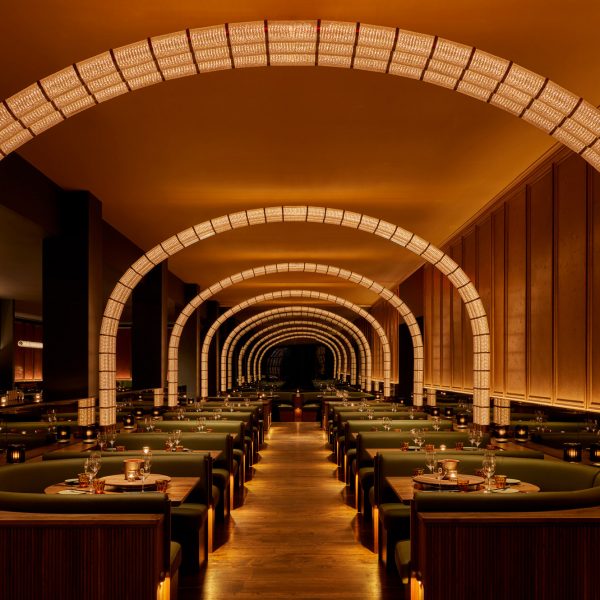[ad_1]
When the 20th century began, California was a landscape of rolling hills. Westward expansion changed this, ushered in by the railroad industry, and urban proliferation continues today. Now, the Hilbert Museum of California Art at Chapman University houses a collection of art from this seminal period in the state’s history. A recent expansion to the museum by Johnston Marklee and SWA put to use a former industrial building, once a dance studio, stitching together a slew of gallery spaces and a cafe all around a new courtyard.
The Hilbert Museum’s prominent location between North Atchison Street and North Cypress Street places it in the heart of the Cypress Street Barrio, an area with a rich agricultural and industrial history. Johnston Marklee pulled from the Orange, California museum’s collection, this suburban environment, and the Chapman University campus in its latest renovation. The repurposing of the former warehouse leans into the neighborhood’s industrial past (and present). A massive mural by artist Millard Sheets installed on the front entrance offers a glimpse into the art on view inside.
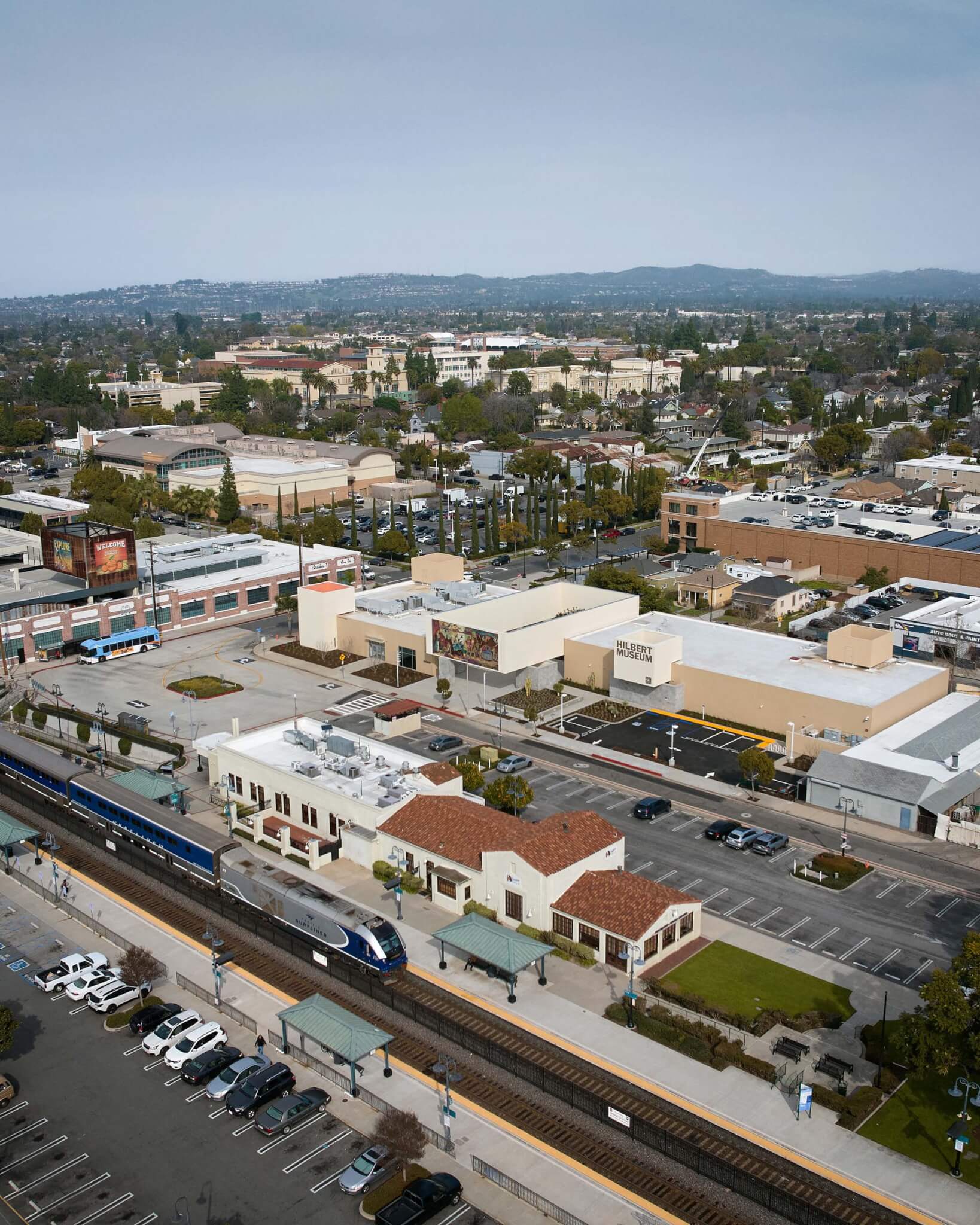
Pleasures Along the Beach, the mosaic work spanning over the entrance of the low-lying museum building, depicts a stereotypical California scene: a day at the beach. The work was previously installed on the exterior of a Home Savings & Loans bank, but was removed following a settlement in 2018. The bank building’s owner planned to donate the piece to the city or a nonprofit. The city refused, opening the door for the Hilberts, who had already been eyeing it.
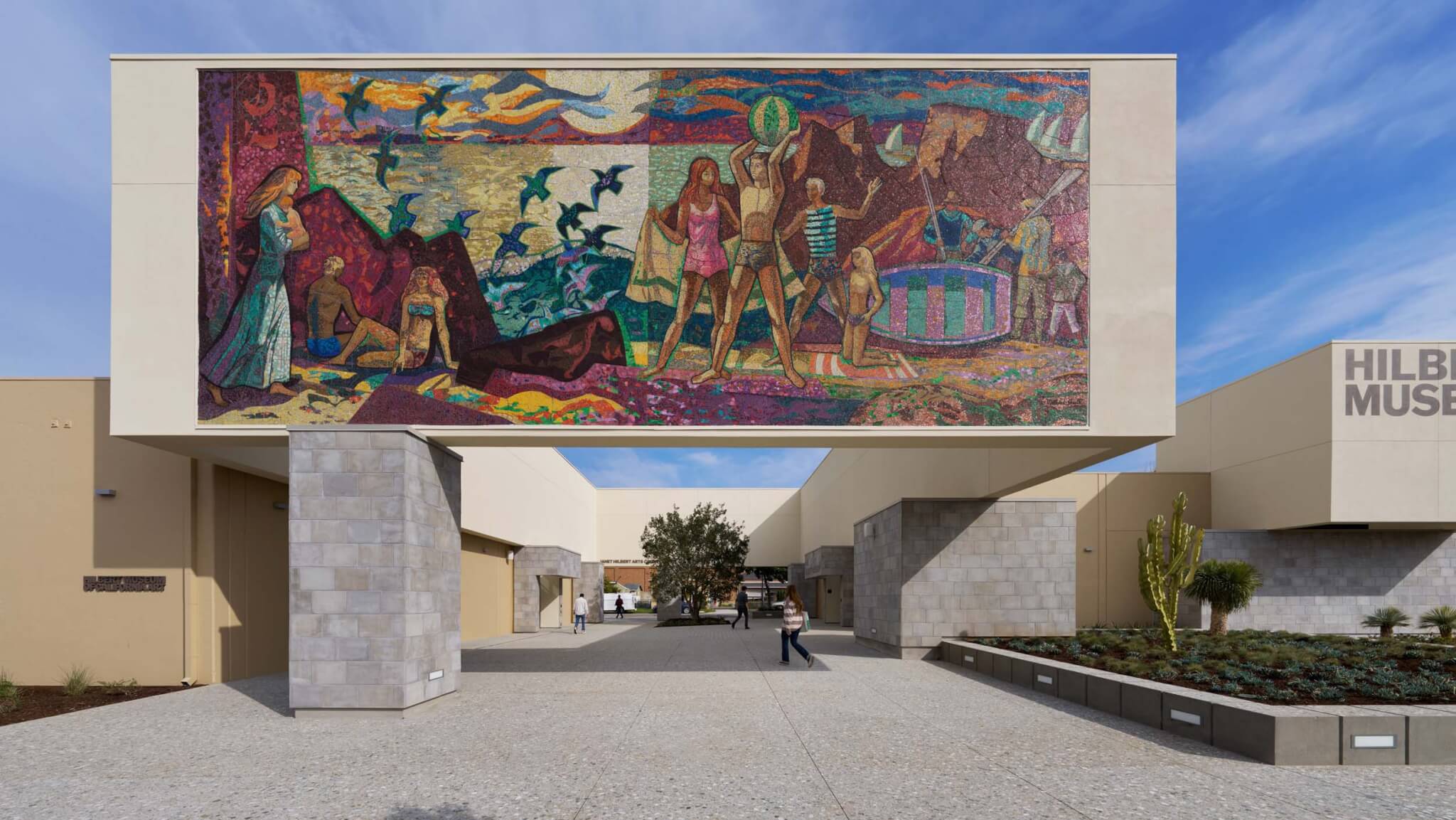
“After Janet [Hilbert] and I saw Pleasures Along the Beach for the first time,” museum benefactor Mark Hilbert said in the Santa Monica Lookout, “we had the idea to add a Millard Sheets mosaic to the building’s exterior as the ultimate preview of the art inside.”
Inside, an exhibition highlighting Sheet’s work is now on view. On the east elevation, a bronze sculpture, Child on a Dolphin by John Svenson, was sourced from the same bank.
In its renovation Johnston Marklee largely kept to the building’s existing form and boxy shape. The tired facade of corrugated metal and brick was replaced with a smooth, more uniform texture and appearance. The pale, neutral paint coating the exterior references the subdued colors found on the Chapman University campus.
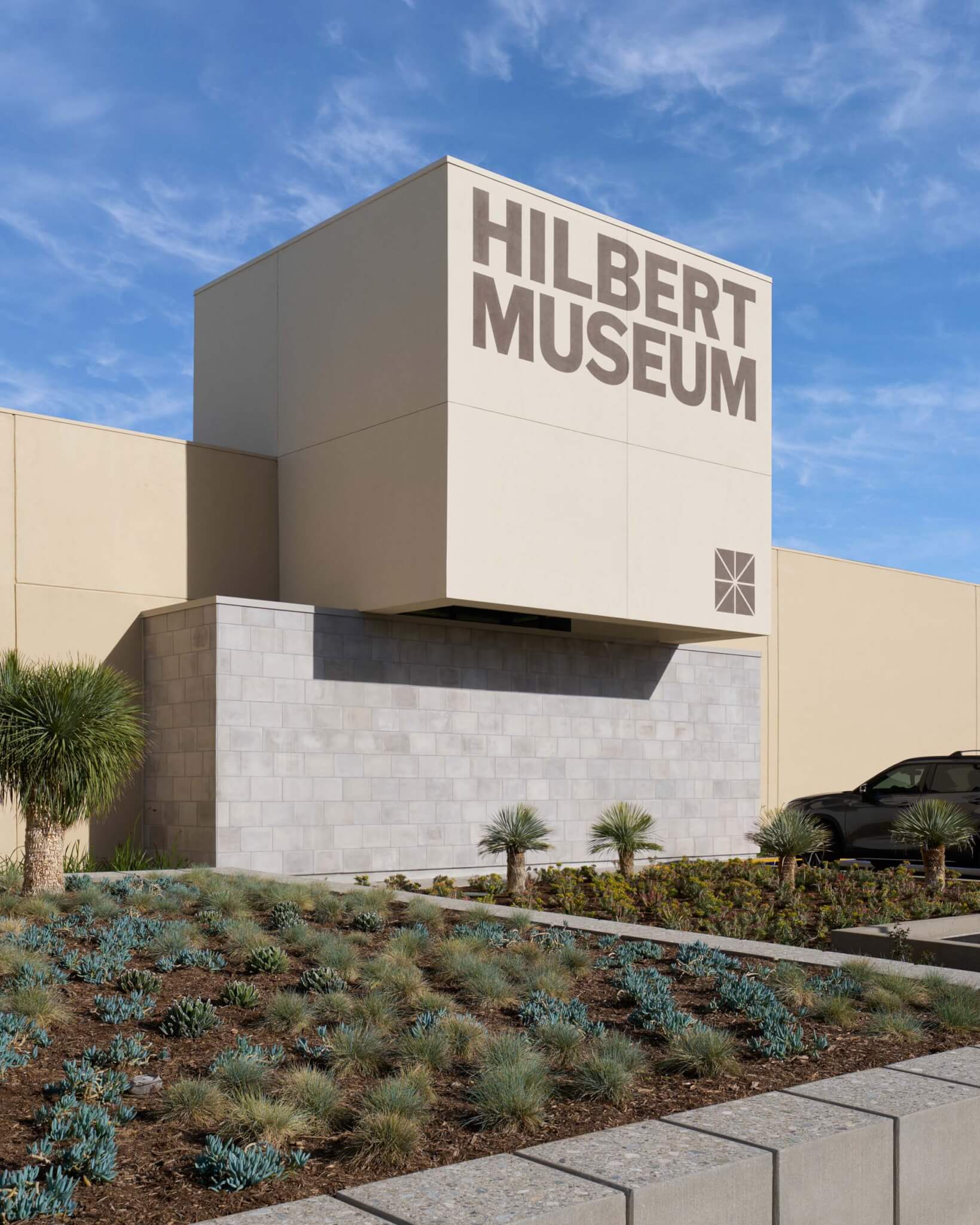
Four new volumes, the architects have dubbed as “urban markers,” update the museum’s graphic identity, insert light into the galleries, and unite the existing buildings with the added components.
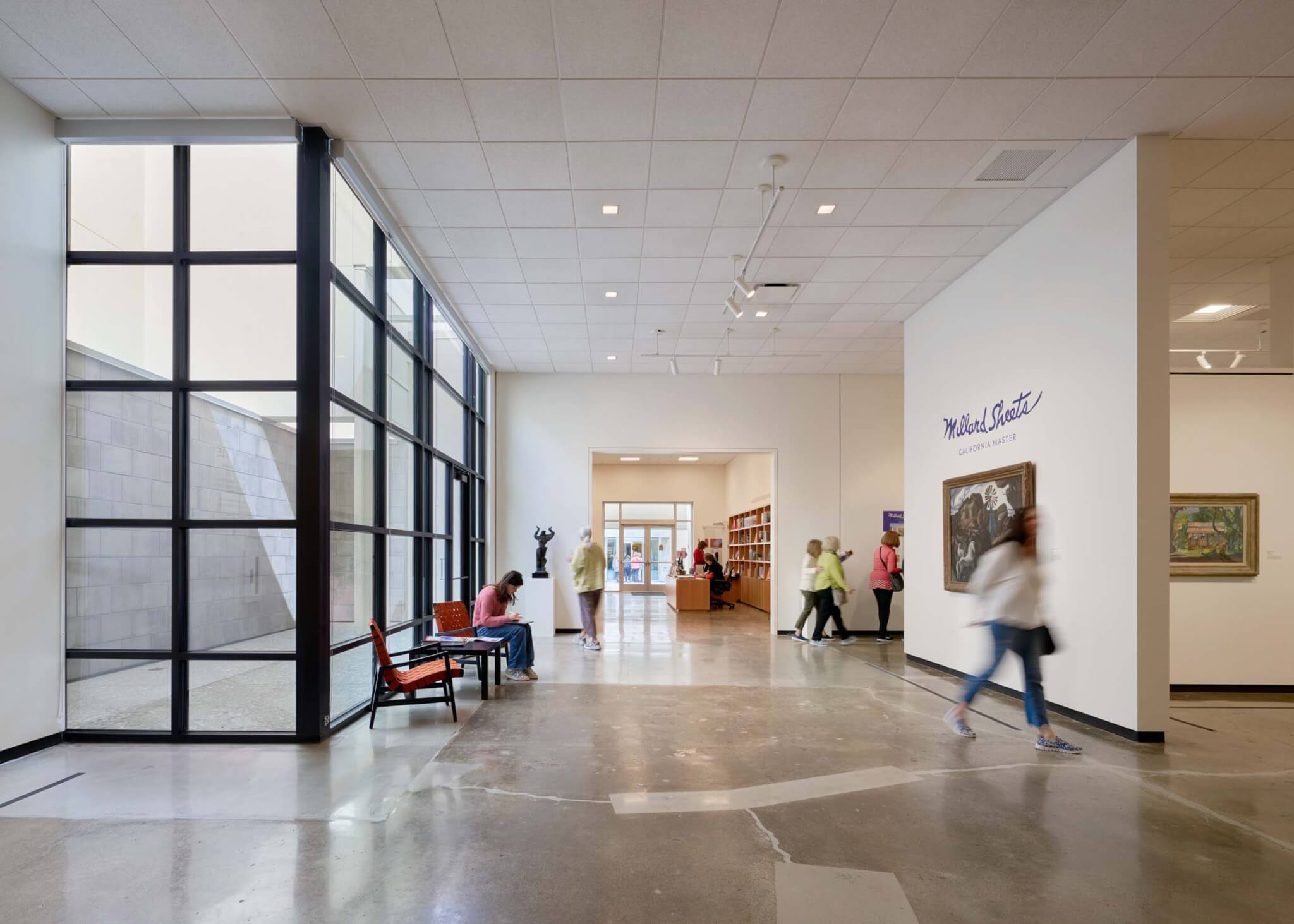
In the North Building, the former dance studio, the space was renovated into galleries for the permanent collection and a new meeting room. Here, the architects were careful to match the finishes and layout with that of exhibition space in the South Building. In the South Building, a new cafe and bookstore amplify the visitor experience. Both buildings open out to a shaded courtyard with a singular oak tree planted in its center.
In the courtyard, again, the architects elected neutral, earthen tones and materials. Concrete tiles face the oversized column structures in the courtyard and a concrete aggregate spans the ground of the public space.
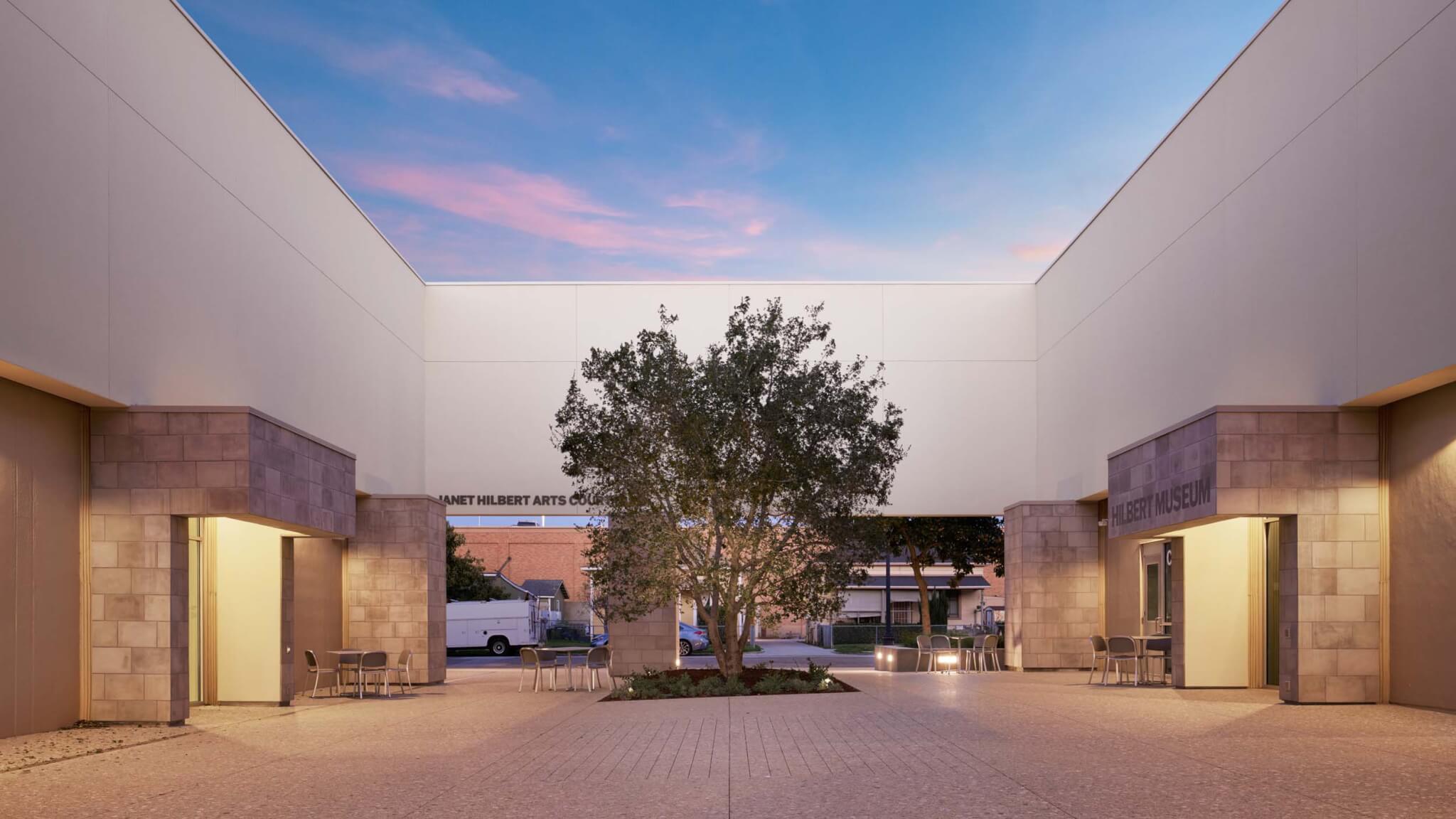
Much like the building and its architecture, the landscape for Hilbert Museum was also informed by the museum collection and considers the wider California environment. SWA was responsible for planning the vegetation around the site. The designers elected for drought-tolerant and native plants.
[ad_2]
Source link










